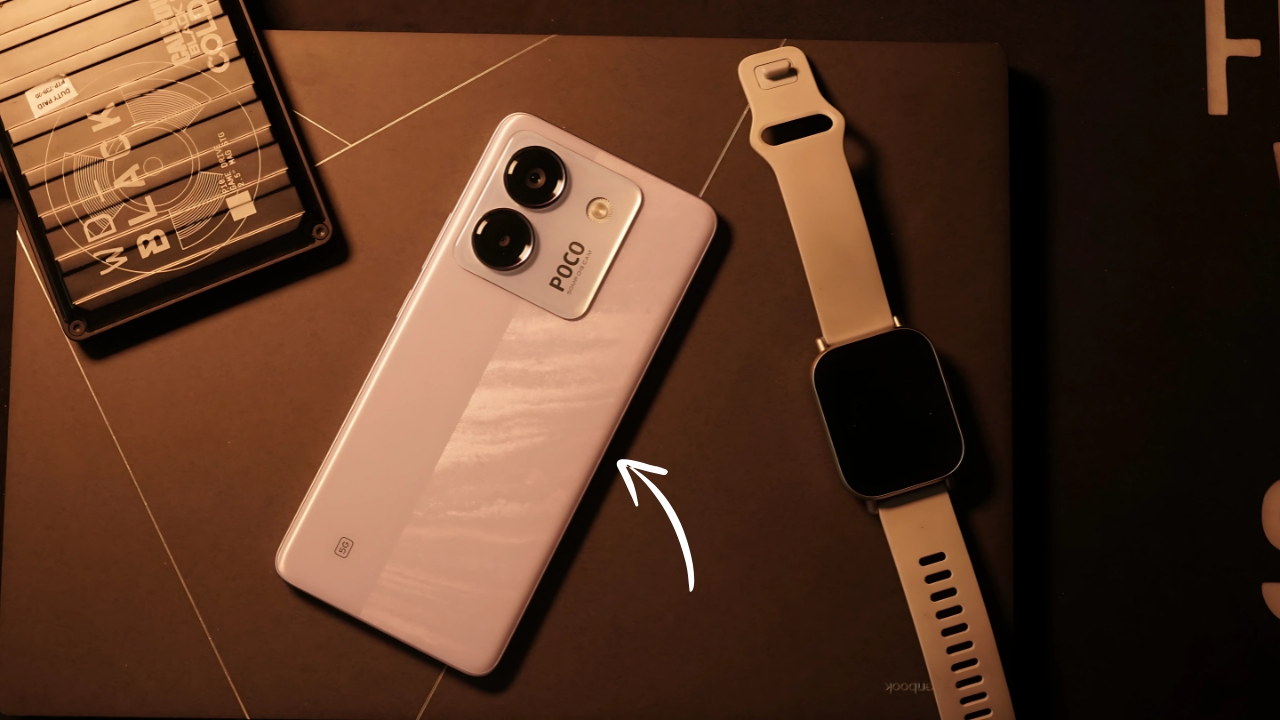Poco M7 Pro : The Poco M7 Pro represents the latest addition to Xiaomi’s sub-brand lineup, targeting budget-conscious consumers who refuse to compromise on essential features.
This device continues Poco’s tradition of delivering competitive specifications at attractive price points, making advanced smartphone technology accessible to a broader audience.
This detailed examination covers the M7 Pro’s key features, performance capabilities, and market positioning.
Display and Design Excellence
The Poco M7 Pro features a 6.67-inch AMOLED display that brings premium visual quality to the budget segment.
The Full HD+ resolution of 2400 x 1080 pixels ensures sharp text rendering and detailed image reproduction.
The AMOLED technology delivers deep blacks and vibrant colors, making content consumption enjoyable whether browsing social media, watching videos, or playing games.
The 120Hz refresh rate stands out as a significant inclusion at this price point.
This higher refresh rate creates noticeably smoother scrolling through applications and more fluid animations throughout the user interface.
Gaming experiences benefit particularly from this feature, with supported titles displaying smoother motion that can provide competitive advantages in fast-paced games.
Design-wise, the M7 Pro adopts a modern aesthetic with slim bezels and a centered punch-hole camera.
The plastic frame and back panel keep costs down while maintaining decent build quality.
The device feels solid in hand despite its lightweight construction. Color options typically include classic black and white variants alongside more vibrant choices like blue or purple, catering to different style preferences.
Camera System Capabilities
Photography remains a crucial consideration for smartphone buyers, and the Poco M7 Pro addresses this with a versatile camera setup.
The primary sensor, reportedly a 64-megapixel unit, captures detailed images in good lighting conditions.
The high resolution allows for cropping flexibility while maintaining acceptable image quality, useful for adjusting composition post-capture.
The camera system includes additional sensors to expand photographic possibilities.
An ultra-wide lens enables landscape photography and group shots in confined spaces.
A macro sensor allows close-up photography of small subjects, though image quality from this sensor typically falls short of the main camera. The depth sensor assists in creating portrait mode effects with background blur.
Software processing plays a crucial role in the camera experience. The camera app includes various modes like Night mode for low-light photography, Portrait mode for subject-focused shots, and Pro mode for manual control enthusiasts.
AI scene detection automatically optimizes settings based on recognized subjects, simplifying photography for casual users.
Video recording supports up to 4K resolution, though frame rates may be limited compared to flagship devices.
Performance and Hardware Specifications
The Poco M7 Pro typically employs a MediaTek Dimensity processor, balancing performance with power efficiency.
This chipset handles daily tasks smoothly, including social media browsing, messaging, and media consumption.
The integrated 5G modem ensures compatibility with next-generation networks, future-proofing the device as 5G coverage expands globally.
Memory configurations usually start at 6GB RAM with 128GB storage, providing adequate resources for multitasking and app storage.
Higher variants with 8GB RAM and 256GB storage cater to power users who run multiple applications simultaneously or store extensive media libraries.
The inclusion of virtual RAM expansion allows the system to use storage space as additional memory when needed, improving multitasking performance.
Gaming performance proves adequate for most popular titles. While demanding games may require reduced graphics settings, the majority of casual and moderately intensive games run smoothly.
The 120Hz display enhances the gaming experience when titles support higher frame rates.
Thermal management keeps temperatures reasonable during extended gaming sessions, preventing significant performance throttling.
Battery Life and Charging Technology
Battery capacity in the Poco M7 Pro typically reaches 5000mAh, ensuring all-day usage for most users.
This capacity, combined with the efficient processor and software optimizations, delivers reliable endurance.
Users report achieving 7-8 hours of screen-on time with mixed usage, including social media, video streaming, and light gaming.
Fast charging support significantly reduces downtime when recharging is necessary. The device usually supports 67W fast charging, allowing the battery to reach substantial charge levels in minimal time.
A 30-minute charge can provide enough power for several hours of usage, particularly useful for users with busy schedules.
The included charger supports maximum charging speeds, eliminating the need for separate accessory purchases.
Battery optimization features in MIUI, Poco’s customized Android interface, help extend usage time.
Adaptive battery management restricts background activity for infrequently used apps while ensuring important applications remain ready for notifications.
Various power-saving modes allow users to extend battery life further when needed, limiting functionality to essential features during critical situations.
Software Experience and Features
The Poco M7 Pro runs MIUI for Poco, based on Android, providing a feature-rich software experience.
While some users appreciate MIUI’s extensive customization options and features, others may find it overwhelming compared to stock Android.
The interface includes themes, icon packs, and various visual customization options allowing users to personalize their experience.
Poco has worked to optimize MIUI specifically for their devices, reducing bloatware compared to standard Xiaomi phones.
However, some pre-installed applications remain, and advertisements may appear in certain system apps.
These can typically be disabled through settings, though the process requires some navigation through menus.
Regular software updates provide security patches and occasional feature additions.
While Poco doesn’t match flagship brands for update longevity, the M7 Pro should receive support for a reasonable period.
The large Poco community often develops custom ROMs for those seeking alternative software experiences.
Pricing and Market Position
The Poco M7 Pro’s pricing strategy targets the competitive budget to mid-range segment. Prices typically start around $250-300 for base configurations, varying by region and storage capacity.
This positioning places it in direct competition with offerings from Realme, Samsung’s Galaxy A series, and other Xiaomi sub-brands like Redmi.
The value proposition centers on providing premium features like AMOLED displays, high refresh rates, and 5G connectivity at accessible prices.
While compromises exist in areas like build materials and camera quality compared to flagships, the overall package appeals to budget-conscious consumers seeking modern smartphone experiences.
